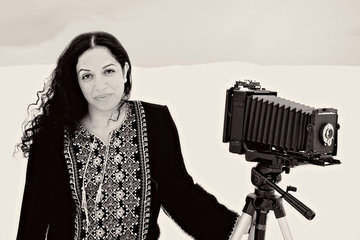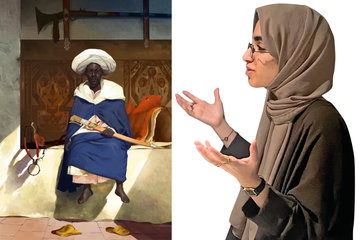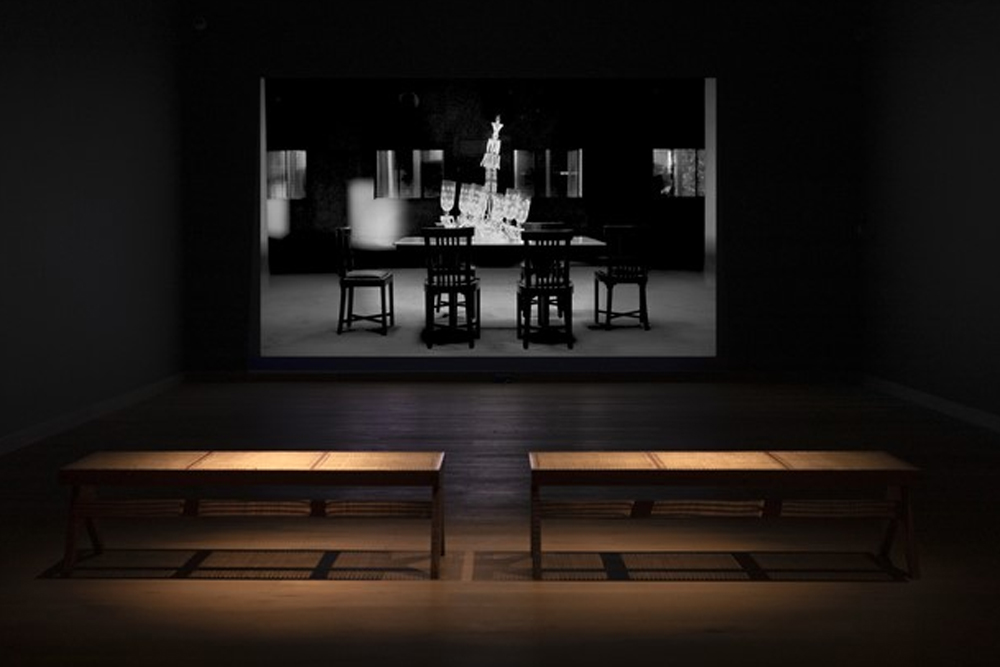
Celebrating the global premiere of the artist’s latest film ‘One Life Many’, the exhibition marks the first survey of Shetty’s moving image works, presenting rarely seen videos, multi-media installations and sculptures.
Sudarshan Shetty’s practice traverses the inner and outer realities of everyday life. Blurring the boundaries between dreams and wakefulness, memories and fantasies, objects and spectres, his works foreground the transient and ever-changing nature of all things. In Only Life, Myriad Places, one is taken on a journey into the labyrinths of the mind, captured through moving images and elaborate mise en scènes. Places, people and stories that seem familiar become estranged. Viewers are invited to contemplate whether the films are a depiction of someone’s dream, or if they are within the dream of the film’s characters.
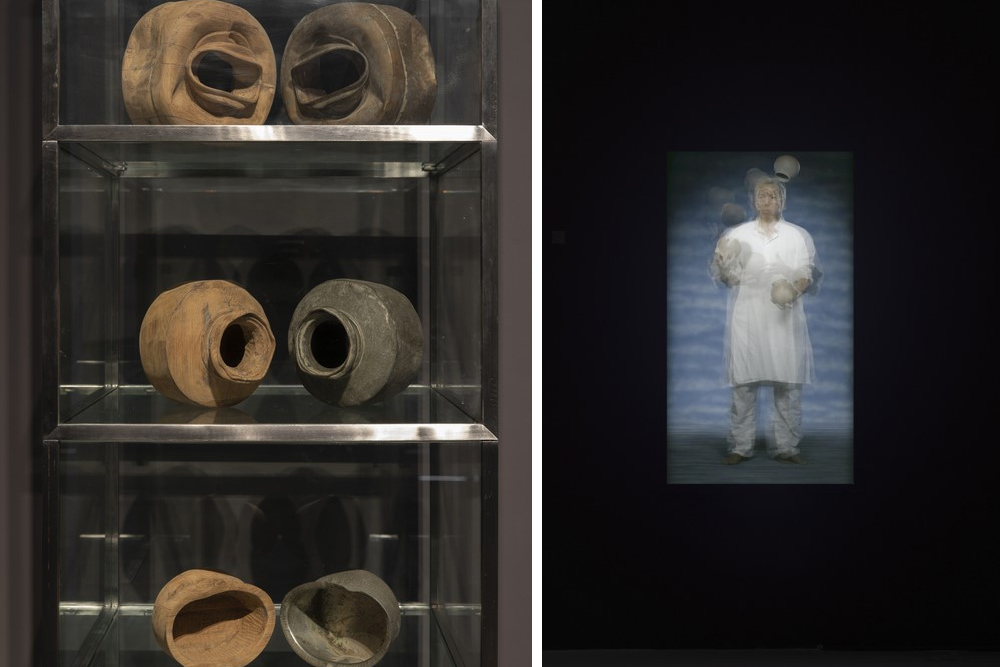
The exhibition at Ishara features eight significant works from Shetty’s vast oeuvre, presenting his rare and deep interest in the musical and literary traditions of South Asia. In the unique form of interdisciplinarity that his practice advocates, a key motif that runs throughout the exhibition is a ‘poetics of listening’. Videos, images, objects and texts assume a fleeting presence in Shetty’s repertoire, as if they were musical notes that are at once real yet ungraspable, repetitive yet novel.
The exhibition at Ishara features eight significant works from Shetty’s vast oeuvre, presenting his rare and deep interest in the musical and literary traditions of South Asia. In the unique form of interdisciplinarity that his practice advocates, a key motif that runs throughout the exhibition is a ‘poetics of listening’. Videos, images, objects and texts assume a fleeting presence in Shetty’s repertoire, as if they were musical notes that are at once real yet ungraspable, repetitive yet novel.
Shetty’s practice considers art beyond its museological after-life that aims to fix, reify and preserve objects for posterity. Instead, his works invoke realms of the sacred, the mystical and the mundane that are everchanging. Residues of physical objects become after-images lingering on in one’s mind as viewers move from one room to the next. By prioritizing the act of hearing over seeing in one’s experience of art, One Life, Myriad Places is a call to sense the world in multiple ways.

The exhibition opens with an untitled sculptural installation by Shetty. Comprising of six pairs of water vessels displayed inside a glass vitrine, each object rests on its side with its mouth partly facing the viewer. Dented and worn with age, the metallic pots are accompanied by their mirror replica sculpted in wood. Arranged vertically in a single column, the installation carries an uncanny resemblance to percussive instruments, an abstract composition of progressive scales, and a duet of bodies resting silently together.
On the other side of the entrance wall, viewers are led into a chamber of melancholic music playing on the sarangi, a South Asian stringed instrument. ‘Waiting for others to arrive’ is a single channel video that explores the philosophical conundrums of life, death and afterlife. Set in an abandoned Neoclassical building in Mumbai with the bustle of every day sounds and music as the only constant, three identical frames unravel a ghostly scenography of objects and bodies that appear and disappear.
This work is followed by Shetty’s most recent and ambitious film ‘One Life Many’. Drawing from a medieval Indian myth of a sage who transforms into another being and back, the work raises the age-old question about how can there be one true self we identify with, when we also carry a multitude of selves inside of us. Produced in 2022 when the world slowly emerged out of the pandemic, the film resituates the myth into a contemporary world that is reawakening after a long period of isolation and introspection. The journey of the protagonist takes place on a meandering path that cuts through empty streets, a busy marketplace, bus terminals and a vast body of water set against the horizon. The character recollects events throughout the film as memories of the past intermingle with folklores and dreams.
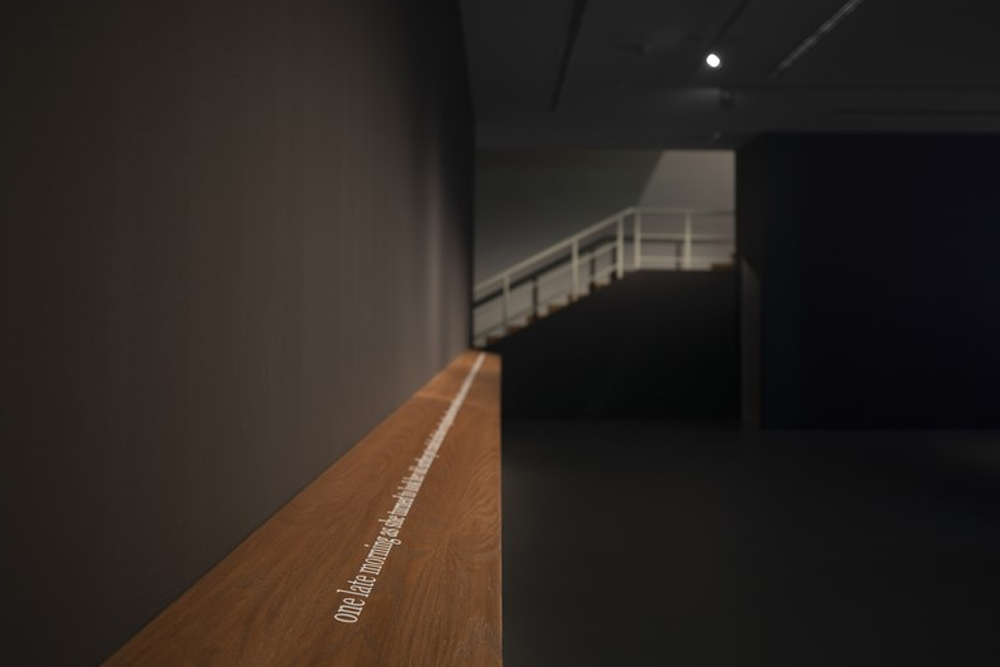
Further into the exhibition is a grouping of three artworks that include an untitled installation with prints, a single channel video titled ‘The Juggler’, and a text. ‘The Juggler’ is a film depicting a man juggling three earthen pots in slow-motion. Reminiscent of several traditions in India where the pot is a symbol for the body, Shetty too refers to its imbued meaning as a vessel for prana, the life-force shared between all living things. While the work takes place in silence, the blurry traces of the orbiting bodies produce a visual echo suggesting a sonic metaphor central to the artist’s process. In effect, we do not see a man juggling three pots, but a man surrounded by innumerable pots suspended in the air, leaving the viewer in suspense whether any of them might fall and break the barrier of silence that shrouds the room. The earthen pot reappears in an untitled installation, this time comprising of three photographs of the artist throwing a pot over his shoulder captured in distinct moments. An actual clay pot accompanying the photographs is on display with its fragments pieced back together. With cracks still visible on its surface, the afterlife of the pot is portrayed having lost its physical integrity but retaining its past. The third work in the room is a text by Shetty presented on a ledge, once again conjuring the image of a cracked earthen pot inside a domestic space of a home. All three works contemplate the nature of life and death, and what finally lives on.
The untitled text leads into the next work, a two-channel video titled ‘A Song A Story’. The work is anchored by two hand-carved wooden installations designed by Shetty that serve as the dramatis personae of the work, namely a home and a pavilion. Inspired from a popular folktale from South India and sung in Braj Bhāshā (a western Hindustani language), the narrative unfolds around a woman who has held onto her song and her story for a long time. In an allegorical twist, both of these escape her silence in rebellion, taking on the form of an umbrella and a pair of man’s shoes stationed outside her door. The plot thickens when her husband returns. The story is told and retold on multiple screens of the two channels as well as the television inside the video. In this work, what remains unconscious takes a life of its own, traversing the domestic and public domains of its characters and seeping into the world outside.
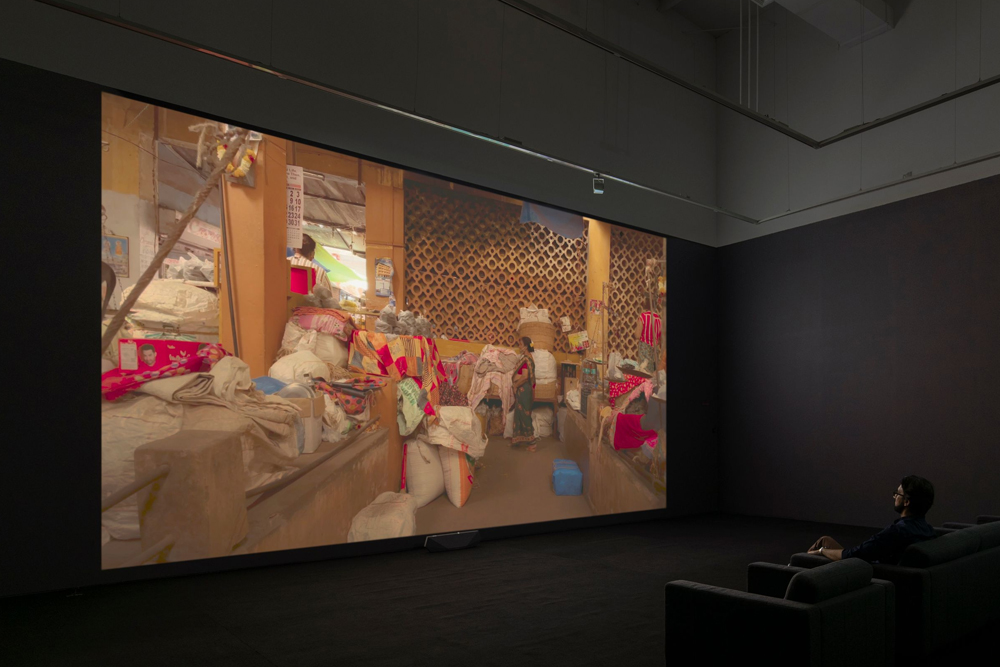
‘Age of Love’ is the final work in the exhibition. Presented on the Foundation’s mezzanine, the multi-media installation derives its title from a musical composition featured in the video. Carefully selected from the vast tradition of Hindustani Classical music, six intergenerational singers string together elaborate renditions in praise of love - the fragile and ungraspable nature of which escapes reason. Staged in a domestic environment at the centre of which is a dining table with chairs, a chandelier looms large with an impending sense of collapse.
Reflecting on the exhibition, Sudarshan Shetty comments: “Like in the Indian subcontinent, the Middle East has a captivating tradition of poetry and storytelling deeply entrenched in its history. The interaction between these two distant lands has fostered a cross-pollination of stories, which has resulted blending of myths, legends and folktales, creating a vibrant mosaic that resonates through both regions. Retelling is the life blood of oral traditions ensuring a sense of community and recalling wisdom that has evolved through centuries. How else can we make sense of our present?”
Only Life, Myriad Places is an artistic homage to the rich and diverse traditions of music, literature and storytelling that have travelled for centuries and are presented through contemporary art. The exhibition will be accompanied by physical and virtual tours, educational and public programmes, and artist conversations over the duration of the show.
For press and interview requests for Ishara Art Foundation, please contact [email protected] | +971 4 2233001.


